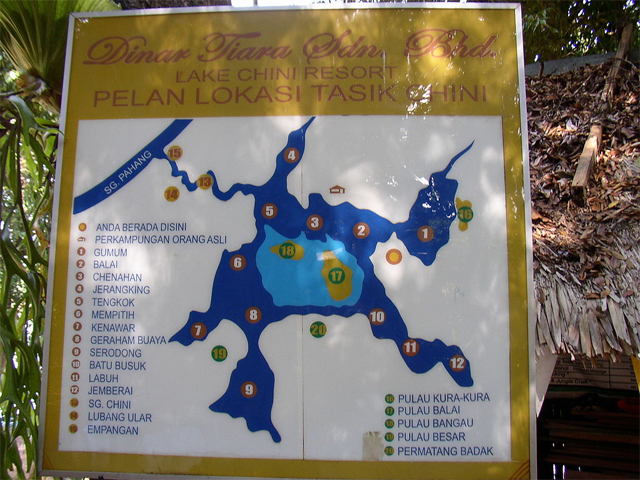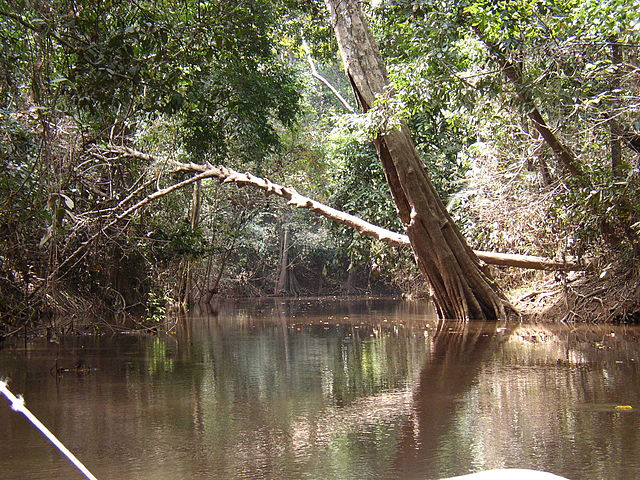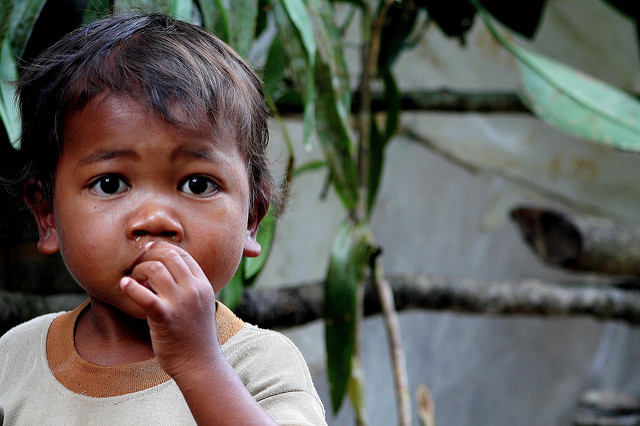The Semai and Jakun people living in several villages around Malaysia’s Chini Lake have had to cope in recent decades with the effects of ever increasing pollution in the water. The Orang Asli people living near the lake, located in the southern part of Malaysia’s Pahang State, have found that the increasing amount of pollution has diminished their ability to successfully fish, gather and hunt. The water pollution has also driven away tourists, on whom the locals had come to rely for income.

Maria J. Dass wrote a news report nearly two weeks ago for a prominent Malaysian news service about the causes of pollution in the lake and the remedies that various agencies are taking to restore its health—and the economies of its surrounding villages. Ms. Dass, taken on a boat tour with other journalists around Tasik Chini, the Malaysian name for the lake, observed the green hills that meet the edge of the water and the occasional lotus plants that are still able to blossom there. She said that the Orang Asli, the Jakun and the Semai, have started referring to the lake water as “teh tarik,” which literally means “dark tea.”
The lake has been designated as a World Heritage Site by Unesco because of its unique ecology and natural beauty. But the fish in the lake and the lotus blossoms have been slowly dying due to mining in the surrounding hills, siltation caused by unwise logging, fertilizer runoff from agricultural practices, plus herbicides and pesticides that have affected the plant and animal life. Most tourists have stopped visiting the area as word of its problems has spread.
A news story in 2004 described the rapid growth of e-coli, salmonella, and other bacterial pollutants in the water of the once beautiful lake. But researchers from the Universiti Kebangsaan Malaysia (UKM) had traced the sources of the pollution and were warning the Orang Asli about drinking lake water.

To judge by this current report, however, it is clear that researchers and agency officials are now working to stem the sources of pollution and to start a remediation process. They realize they will have to do a lot more if they hope for a rebound of ecotourism. Ms. Dass’s report indicated that the UKM is leading the efforts with its Tasik Chini Research Centre, a crucial part of which is the Tasik Chini Freshwater Laboratory Complex. The laboratory is committed to monitoring the quality of all the sources of water entering the lake in real time. Seven different monitoring stations and some cleanup efforts have already resulted in the improvement of water quality from Class III to Class II. It is now clean enough to bathe or swim in. The improvement will allow the lake to retain its status as a Biosphere Reserve. The Pahang State government is supporting the effort, hoping to revitalize the faded tourist spot.
The Director of the lab, Dr. Mushrifah Idris, said that improvement of the water quality has fostered other recovery efforts. Success has begat success. A lotus reintroduction project has started successfully, she told the journalist, and the fish diversity is improving. The UKM is working to reduce erosion along river banks and to prevent sedimentation from entering the lake. An official at the university, Dr. Mazlin Mokhtar, said that plans to rehabilitate the lake should ultimately lead to increases in ecotourism, which should benefit local residents.

Dr. Maketab Mohamed, formerly president of the Malaysian Nature Society, cautioned that the steps that were being taken by the agencies were important but he felt that they might not be enough. The agencies were not preventing water carrying excess fertilizers and pesticides from entering the lake. The polluting water, high in nutrients, results in the growth of invasive plants that are choking it.
He said that it has required activism by the NGOs and efforts of the academics to pressure the government agencies into finally taking action. “The watershed of Tasik Chini MUST be protected from development and only the Orang Asli should be allowed to develop the area as they are the original occupants,” he said. In other words, people in positions of authority should respect the wishes of the Jakun majority and the Semai minority in the villages around the lake.

Dr. Maketab said that one of the problems in the lake is that a small dam was built to raise the water level modestly in the mid-1990s, despite objections from some officials. It was built across the Chini River, the outlet stream, after the Prime Minister of Malaysia at the time, Mahathir Mohamed, visited the lake and commented that he thought the water level was too low. He suggested that it should be raised. The dam prevents the natural flushing that used to occur twice a year when the large river, the Sungai Pahang, just 1.5 miles away, was high. The flooding tended to clean pollutants out of the lake and maintain its water quality.
That natural flushing also exchanged fish between the river and the lake ecosystems. The Jakun and the Semai were aware of all that, but they had no way to contradict the expressions of the Prime Minster. Dr. Maketab told the journalist, “Ask the Orang Asli when the officials are not around and they will tell you they want the [small dam] removed. They say that was the start of their problems.”

Social scientists Ashencaen Crabtree and Parker (2014), in their “Report on Ethnographic Work at Tasik Chini,” said the same thing that Dr. Maketab told the journalist. The first recommendation in their report was that “The voices of the Orang Asli, diverse as they are, should be central to any development initiative (p.4).” Their careful study of the communities surrounding the lake in early 2014 showed how the Orang Asli are disadvantaged and marginalized in the Malaysian discussions of how to save and improve the habitat around what is one of their nation’s premier natural attractions.
The authors mentioned that there were, as of 2014, 429 Orang Asli living in five villages around the lake, of whom 88 percent were Jakun and the remainder Semai.